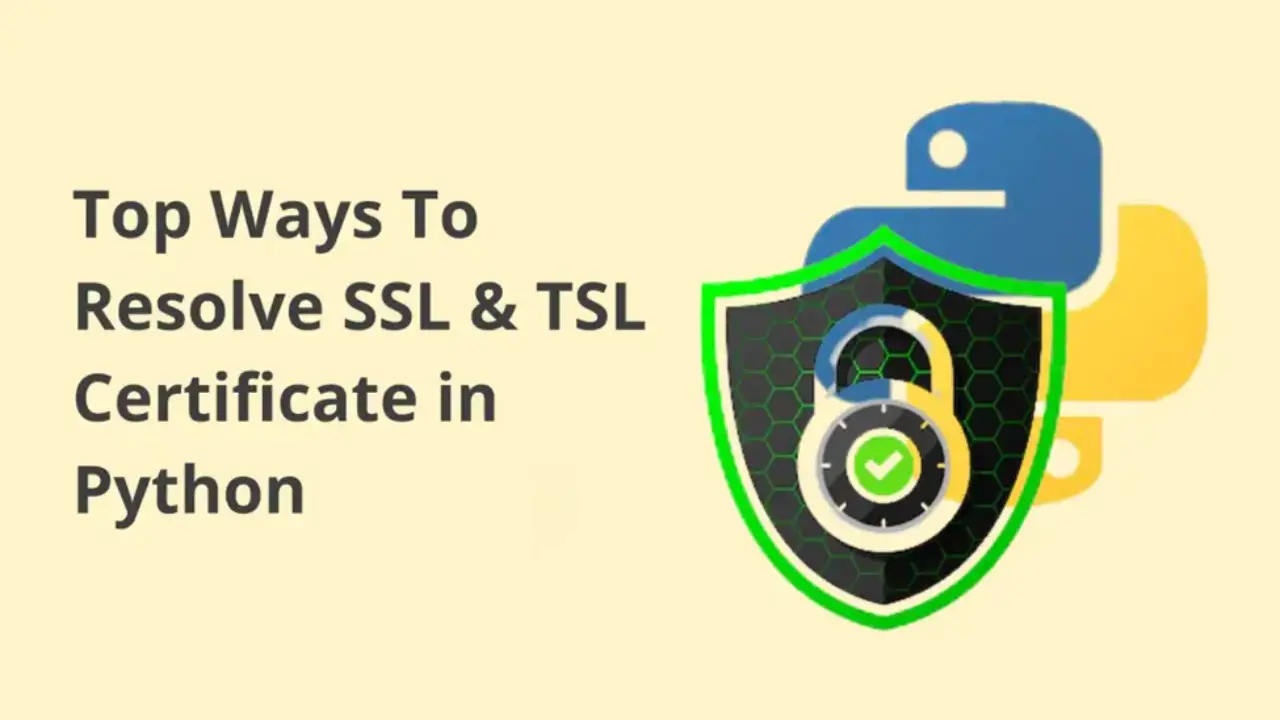
Python is a popular programming language. It is an object-oriented language used by programmers to build high-performance applications.
However, when it comes to security, Python too has issues.
For example, Python’s CVE-2021-3737 vulnerability allows a remote attacker to make the client script enter an infinite loop. In other words, a cyber attacker can shut down the server remotely.
SSL/TSL certificates can help your systems against such attacks by ensuring secure communications.
SSL-based encryptions ensure system protection through the security of communication channels between browsers and servers.
In addition, SSL/TLS certificates enable businesses to secure their web apps and sites against man-in-the-middle attacks.
You can choose wildcard SSL certificates if you are an eCommerce business with several sub-domains. It reduces the need for individual certificates for different sub-domains.
However, a lack of configurations can cause issues with Python’s SSL/TLS certificates. So, here we are with the best ways to resolve such issues.
Let’s start by understanding the SSL certificates first!
lack of configurations can cause issues with Python’s SSL/TLS certificates. So, here we are with the best ways to resolve such issues. Let’s start by understanding the SSL certificates first!
What is an SSL certificate?

SSL or secure sockets layers is one of the most significant cryptographic protocols to secure websites and applications. It keeps the websites secure and keeps the data exchanged anonymously to hackers.
So, how to get an SSL certificate?
You can request an SSL certificate to secure apps and web apps from cyberattacks.
Here is a short guide,
- You need CSR and a private key to request an SSL certificate
- Submit the generated CSR and private key to the certificate authority
- CA will validate your identity based on CSR details
- After validation SSL certificate is issued
You can choose from different SSL certificates according to your specific requirements.
For example, if you are a small business or have a personal blog site to secure, you can choose domain-validated(DV) certificates.
However, an enterprise’s extended validation(EV) SSL certificates are the best choice.
Similarly, if you need to secure user interactions across human resources, sales, and other departments, a wildcard SSL certificate is a good choice.
Now that we know what SSL certificates are and how to get them for your website, here is how it works,
- The user tries to access the website through a browser
- The browser will validate the identity of the server
- The server will provide the browser with an SSL certificate for validation
- The browser will match the certificate with a preloaded list of valid certificates
- If checked, it will signal the server about successful validation
- The server then provides an acknowledgment which is digitally signed
- Data can be exchanged securely between browser and server
We have covered everything on the SSL certificate, but if your Python programs do not verify the certificate, here are some ways to fix it.

There can be verification errors when installing SSL/TSL certificates to your Python website or web app.
One of the most common errors is when the system does not identify the wildcard SSL certificate as a root certificate.
It occurs for several reasons like invalid certificate installation, configurational issues, or a non-compatible version of Python.
Let’s discuss issues and resolutions for your wildcard SSL certificate in Python.
Certificate verification
Certificate verification in Python is prebuilt and verifies your wildcard SSL certificate. You can use the following configuration for activation. It uses Python requests for certificate verification.
import requests
#Requests ignore verifying the SSL certificate if you set verify to False
# Making a get request
response = requests.get('https://mydomain.com/', verify=False)
print(response)
print("\n=======================================================\n")
#Requests verifies SSL certificates for HTTPS requests, just like a web browser.
response1 = requests.get('https://google.com/')
print(response1)
print("\n=======================================================\n")
#Requests ignore verifying the SSL certificate if you set verify to True (Default value)
response1 = requests.get('https://mydomain.com/', verify=True)
print(response1)
Failed verification error
One of Python’s most common issues with SSL certificates is verification error. SSL_Verify_Error can be caused due to several reasons.
First, a reason can be the improper installation of Python. This is where you can use Python Package Installer(PIP).
You can update the SSL certificate directory in Python, enabling the system to identify the digital certificates. This means no errors related to SSL verification. Here is the code that you can use for updating the directory,
pip install --upgrade certifiOnce you execute the command, you will be allowed to download files blocked earlier due to an SSL verification error.
Update Python versions
Different Python versions provide compatibility for SSL certificates. However, there are older versions that have compatibility issues.
This is why it is essential to update your Python versions to support SSL certificate verification. Python provides compatibility to SSL certification through TLS/SSL wrapper.
However, it was introduced in version 3.5 or later, so you need to update the Python for these versions.
Conclusion
Python is one of the best programming languages used by many organizations, and if you are one of them, you need to resolve SSL issues.
Significantly when an SSL certificate can help you secure your Python programs, you need to fix the verification errors.
Here we have discussed some ways to resolve your wildcard SSL issues in Python. Do comment below if you have any doubt about either of the methods.
